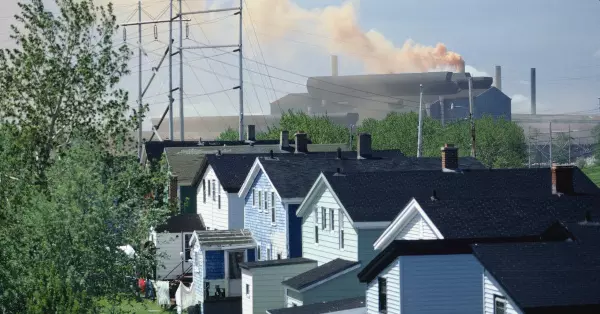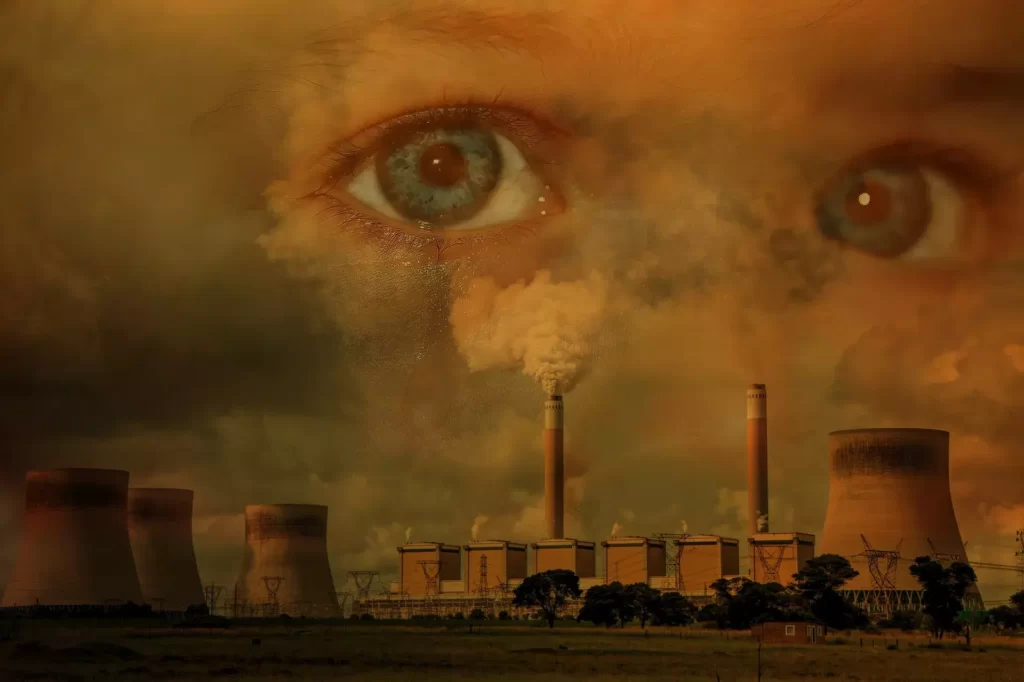What are sacrifice zones?
Sacrifice zones are geographical areas which are knowingly destroyed in the name of power and profit. They are generally ‘out of the way’ places, and the people who reside in them tend to be poor and lacking political power. This usually has something to do with race and/or class.
Sacrifice zones can be specific neighbourhoods exposed to toxic chemicals like “cancer alley” – a region along the Mississippi River where pollution from surrounding petrochemical plants is so great that the risk of cancer in some places is 50x the national average.
Sacrifice zones can also be entire countries, namely those that already experience the worst effects of climate change like Bangladesh – where rising sea levels and extreme weather such as severe storms, cyclones, drought and landslides are expected to displace one in seven people by 2050.
Whether it’s at village, county or country scale, sacrifice zones disproportionately affect poor, BIPOC communities (between 1999 and 2018, 7 of the 10 countries most affected by extreme weather events were amongst the least developed – and least polluting).
If everyone who showed their support or posted a black square on their social media last year really believed that black lives mattered… we would be dealing with climate change like a global emergency as we have done with the coronavirus pandemic. Instead, because the communities affected don’t have the privilege of being rich or white, leaders in the Global North continue to procrastinate.
Sacrifice zones don’t happen by accident
Sacrifice zones are not a mistake. Their very existence is an inevitability of capitalism with its “logic” of perpetual growth which requires dispensable places and people. Their proximity to BIPOC communities is no accident either: it’s dictated by an underlying belief that non-white individuals are somehow inferior – also known as white supremacy. If solutions do not work towards dismantling these two integral parts of society, ever more places and ever more people will find themselves sacrificed.
But what’s that got to do with climate solutions?
One might assume that any attempt to lessen the effect of climate must also, by default, address the issue of sacrifice zones. Alas… if only it were that simple.
The primary focus when it comes to climate change must be that we rapidly reduce our emissions and make a just transition to renewable energy. We can also plant trees to remove carbon and develop technologies, such as carbon capture, to lessen the impact of what we have already emitted. The latter tends to be the approach favoured by capitalism; it is also where my issue lies.
Whilst technological innovation may indeed be a crucial element of our recovery, relying too heavily on this approach is dangerous. Developing a method of sucking up carbon from the atmosphere doesn’t address the problem of over-emitting. Instead, it obscures it and allows decision makers to avoid the urgent need for emission reductions and systemic change.
Re-engineering the planet
Capturing carbon falls under the umbrella of geoengineering – the deliberate, large-scale manipulation of our environment to combat the effects of climate change. Other projects range from releasing iron into the ocean in order to create a carbon-absorbing algal bloom, to even attempting to dim the sun…
Often funded by the rich, white likes of Bill Gates, these extreme climate ‘solutions’ are gaining more and more attention – primarily from billionaires, big corps, oil giants and governments in the Global North. Their stance on solar geoengineering is unsurprising given that the alternative would involve addressing the roots of our climate problems, which also happen to be the source of their “success” (shock horror… it’s capitalism and white supremacy).
One particularly bizarre plan to geoengineer our way out of the climate crisis, is proposing to replicate the effects of a volcanic eruption. This (in)famous strategy would involve injecting our atmosphere’s second layer, the stratosphere, with sulphate which should (👀) reflect sunlight back into space and cool the earth.
Let’s unpack this idea…
Firstly, even if it were to work, there are huge risks associated with this kind of large-scale action, including the increased possibility of droughts, desertification and damage to the ozone layer. Volcanic eruptions have been known to affect the monsoon cycles of Asia and Africa. Team that with the effects of less sunlight and you risk serious disruptions to food availability, potentially leading to famine, civil conflict, even international war… All of which would occur first and worst in the places that are already most affected by climate disaster.
Then of course there’s the possibility that the idea could fail entirely, meaning masses of money wasted but most importantly TIME wasted. And who pays the price? You guessed it – it’s the most affected people/places in existing sacrifice zones.
Tags: Sacrifice zones




